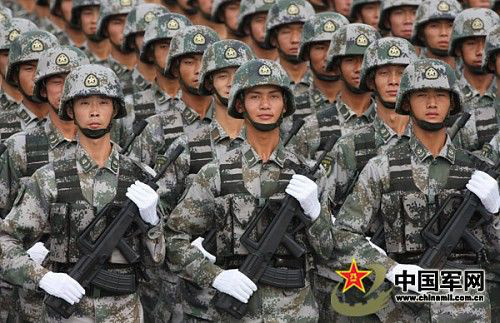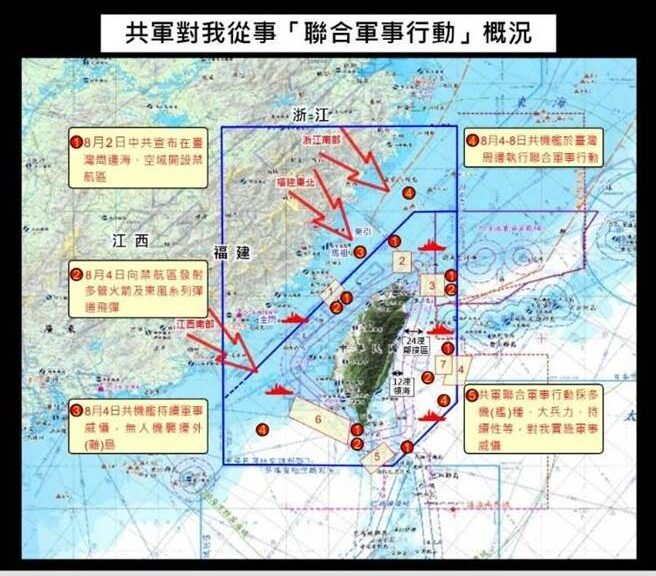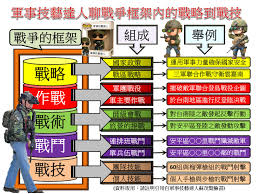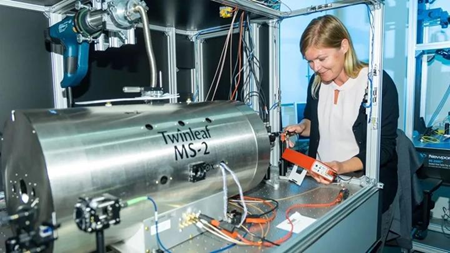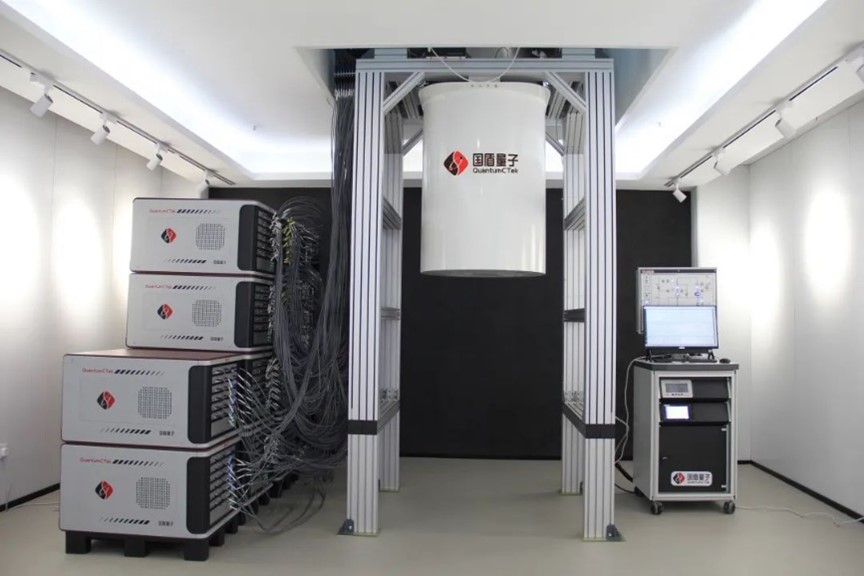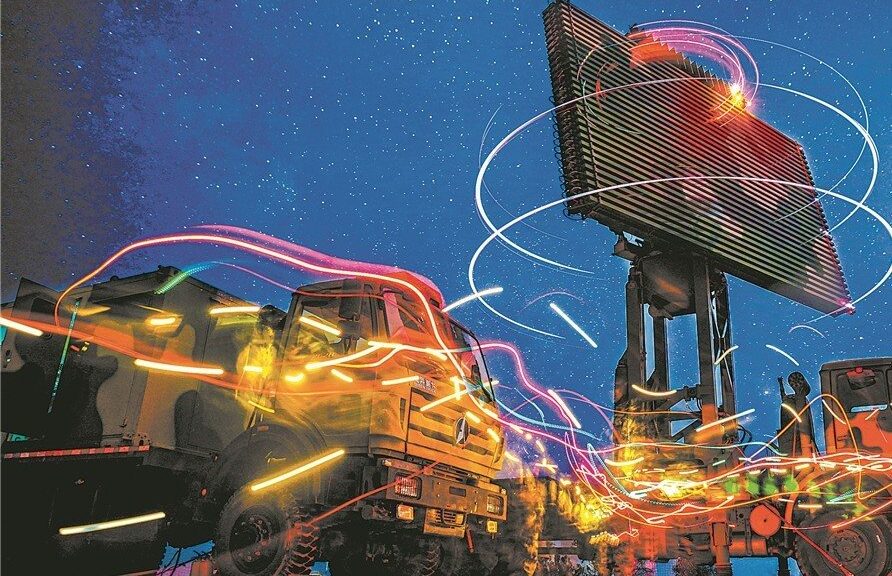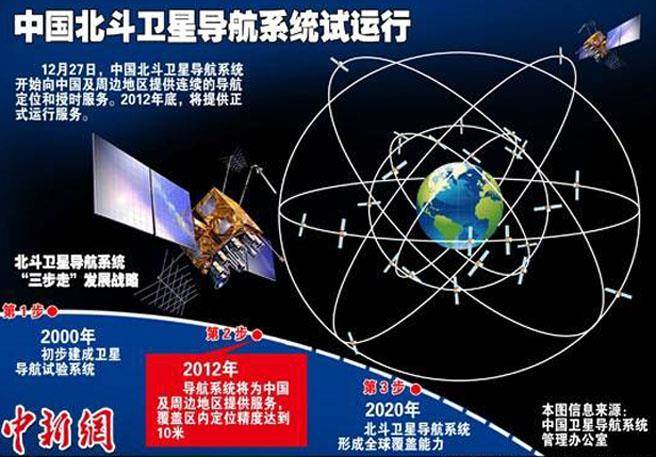加強中國軍事情報轉型的基礎
現代英語:
The nature of warfare is rapidly evolving towards intelligence. The intelligent transformation of the military is not merely a simple accumulation of technologies, but a systemic change supported by data, algorithms, and computing power. These three elements mutually empower and organically integrate, forming the technological foundation for generating new combat capabilities. To accelerate the intelligent development of the military, we must deeply grasp the technological logic of intelligent transformation, solidify the data foundation, activate the algorithm engine, and strengthen computing power support to provide a solid guarantee for winning future intelligent wars.
Operational data: the “digital cornerstone” of intelligent transformation
Data is the “lifeblood” of intelligence. Without the accumulation of high-quality, large-scale, and multi-dimensional operational data, the transformation of military intelligence will be like water without a source or a tree without roots. In intelligent warfare, all activities across the entire chain, including battlefield perception, command and decision-making, and combat operations, are essentially processes of data generation, flow, processing, and application. The completeness, accuracy, and timeliness of operational data directly determine the perception precision, decision-making speed, and strike accuracy of intelligent systems, and are an indispensable cornerstone for the intelligent transformation of the military field.
The core value of operational data lies in breaking through the “fog of war” and enabling a shift from experience-driven to data-driven approaches. In traditional warfare, commanders primarily rely on battlefield reconnaissance, intelligence analysis, and combat experience to make decisions. Limited by the breadth and depth of information acquisition, these decisions often carry a degree of subjectivity and limitation. However, in the era of intelligent warfare, a single reconnaissance drone can transmit 5GB of image data per second, and satellite networks constantly track tens of thousands of ground targets, resulting in a geometrical increase in the rate of battlefield data generation. This operational data, originating from multiple domains including land, sea, air, space, cyber, electronic, and psychological domains, can, after standardized processing and in-depth analysis, construct a transparent battlefield situation across all domains, providing commanders with precise decision-making support.
Building a comprehensive operational data resource system requires focusing on key aspects of the entire lifecycle governance. In the data acquisition phase, it’s essential to base data acquisition on the needs of all-domain operations, broaden data source channels, and achieve full coverage of data in both traditional and new domains. Traditional domains should focus on land, sea, and air battlefields, accurately collecting data on troop deployments, equipment performance, and terrain. New domains should extend to outer space, deep sea, polar regions, and cyberspace, prioritizing the collection of data on space target trajectories, deep-sea environmental parameters, and cyberspace situational awareness. In the data fusion and processing phase, a unified data standard system must be established to address prominent issues such as multiple values for a single data point and inconsistent formats, achieving interconnectivity between data from different sources and of different types. In the data sharing phase, a sound cross-domain sharing mechanism must be established, along with tiered and categorized sharing rules, breaking down service-specific barriers, departmental boundaries, and network isolation to build a ubiquitous, all-encompassing, and interconnected data sharing environment, maximizing the utilization of data resources.
To fully leverage the multiplier effect of combat data, the key lies in cultivating data-driven thinking and building a strong professional team. Data-driven thinking is the prerequisite for activating data value. It is essential to guide officers and soldiers to develop the habit of “thinking with data, speaking with data, managing with data, and making decisions with data,” abandoning traditional thinking patterns based on experience and intuition. In operational planning, quantitative analysis should be based on data; in training evaluation, precise measurement should be based on data standards; and in equipment development, iterative optimization should be supported by data. Simultaneously, efforts should be focused on building a professional data talent team, clarifying the responsibilities of each position, and connecting the entire process from data generation to data application. Through various means such as academic training, on-the-job experience, and specialized training, the professional skills of officers and soldiers in data collection, processing, analysis, and application should be improved, creating a composite talent team that understands both military operations and data technology, providing talent support for releasing the value of data.
Specialized Algorithms: The “Digital Engine” of Intelligent Transformation
If data is the “fuel” of intelligence, then algorithms are the “engine” that transforms fuel into power. Specialized algorithms, as the core driving force of military intelligence, are the key link in realizing the transformation of data into knowledge, knowledge into decision-making, and decision-making into combat effectiveness. In intelligent warfare, the quality of algorithms directly determines the reaction speed, decision-making accuracy, and combat effectiveness of the combat system, becoming the engine of intelligent transformation in the military field.
The core advantage of algorithms lies in reconstructing the operational chain and achieving rapid iteration of the OODA loop. In traditional warfare, the chain of observation, judgment, decision-making, and action is lengthy and often struggles to adapt to rapidly changing battlefield situations due to limitations in human processing capabilities. Intelligent algorithms, however, can leverage machine learning, deep learning, and other technologies to process massive amounts of operational data in seconds, perform real-time analysis, and uncover patterns, significantly shortening the decision-making cycle. In simulation tests, foreign military AI command systems generated multiple complete operational plans in a very short time, demonstrating response speed and decision-making efficiency far exceeding that of human command teams, fully showcasing the enormous advantages of algorithms in accelerating the decision-making process. In combat operations, algorithms can span the entire chain, from reconnaissance and perception, command and decision-making, fire strikes, and effect assessment, constructing an autonomous, closed-loop “kill chain.” From target identification to threat ranking, from plan generation to fire allocation, from strike implementation to damage assessment, algorithms can autonomously complete a series of complex tasks, achieving a “detect and destroy” operational effect.
Enhancing the practical application effectiveness of algorithms requires strengthening technological innovation and scenario empowerment. In terms of technological innovation, it is essential to keep pace with the development trends of artificial intelligence and accelerate the military application transformation of cutting-edge algorithms. Focusing on emerging technologies such as generative AI, neuromorphic computing, and brain-computer interfaces, we should explore pathways for the deep integration of algorithms with military needs. Regarding scenario empowerment, we must build diverse typical scenarios for algorithms based on actual combat requirements, develop specialized algorithms for target recognition, situational assessment, and virtual training, overcome bottlenecks in information processing in complex electromagnetic environments, promote the modularization and lightweight transformation of algorithms, and rapidly integrate them with command and control systems and unmanned equipment systems. This will allow algorithms to continuously iterate and optimize in specific tasks within typical scenarios, transforming algorithmic advantages into practical combat capabilities.
Strengthening algorithm security is crucial for ensuring the steady and sustainable development of intelligent transformation. While algorithms enhance combat effectiveness, they also face security risks such as tampering, deception, and misuse, potentially leading to serious consequences like “algorithmic runaway.” It is essential to establish an algorithm security review mechanism to conduct full-process security assessments of algorithm models in military intelligent systems, focusing on their reliability, transparency, and controllability to prevent algorithmic bias and logical vulnerabilities. Strengthening the research and development of algorithmic countermeasures technologies is also vital. This involves improving the anti-interference and anti-attack capabilities of our own algorithms while mastering techniques to interfere with and deceive enemy algorithms, thus gaining the initiative in algorithmic confrontation. Simultaneously, it is crucial to emphasize algorithmic ethics, clearly defining the boundaries and rules of algorithm application to ensure that algorithm development and use comply with international laws and ethical standards, avoiding any violations of war ethics.
Supercomputing Power: The “Digital Energy” for Intelligent Transformation
Computing power is the fundamental capability supporting data processing and algorithm execution, much like the “energy support” for intelligent systems. In the transformation towards military intelligence, the explosive growth of data and the increasing complexity of algorithms have placed unprecedented demands on computing power. The scale, speed, and reliability of supercomputing power directly determine the operational efficiency and combat effectiveness of military intelligent systems, becoming the driving force behind the intelligent transformation of the military field.
The core role of computing power lies in overcoming performance bottlenecks and supporting the efficient operation of complex intelligent tasks. The demand for computing power in intelligent warfare exhibits an “exponential growth” characteristic: an advanced AI command system needs to run thousands of algorithm models simultaneously when processing battlefield data across the entire domain; a swarm of drones performing collaborative combat missions requires real-time interaction and decision-making calculations involving massive amounts of data; a large-scale virtual combat training exercise needs to simulate the interactive behaviors of tens or even hundreds of thousands of combat units. The completion of these complex tasks is inseparable from powerful computing power. Without sufficient computing power, even the highest quality data cannot be processed quickly, and even the most advanced algorithms cannot operate effectively. Currently, computing power has become a crucial indicator for measuring the level of military intelligence; whoever possesses stronger computing power holds the initiative in intelligent warfare.
Building a computing power system adapted to the needs of intelligent transformation requires creating a collaborative computing power layout across the cloud, edge, and terminal. In the cloud, distributed cloud computing centers need to be constructed to build a computing power foundation that covers the entire domain and is elastically scalable. Relying on infrastructure such as big data centers and supercomputing centers, various computing resources should be integrated to form a large-scale, intensive computing power supply capability. At the edge, computing power should be deployed more readily, enhancing the autonomous computing capabilities of the battlefield. For special scenarios such as forward positions, naval vessels, and air platforms, miniaturized, low-power, and highly reliable edge computing nodes should be developed to transfer some computing tasks from the cloud to the edge. This reduces reliance on communication links and data transmission latency, and ensures that combat units can autonomously complete basic tasks such as target identification, path planning, and coordination even in extreme environments such as communication interruptions or signal blackouts, thus improving the system’s survivability. At the terminal, the built-in computing power of equipment should be strengthened to improve the intelligence level of individual combat platforms. By embedding high-performance AI chips into platforms such as drones, unmanned vehicles, and missile weapons, equipment is endowed with the ability to autonomously perceive, make decisions, and act, making it an intelligent unit with independent combat capabilities and laying the foundation for cluster collaboration and system-on-system confrontation.
Enhancing the combat readiness of computing power support requires strengthening technological innovation and security protection. In terms of technological innovation, it is crucial to keep pace with the development trends of computing power technology and accelerate the military application of new computing technologies. Focusing on cutting-edge areas such as quantum computing, photonic computing, and neuromorphic computing, we must break through the performance bottlenecks of traditional computing architectures and develop disruptive new computing power equipment. Simultaneously, we must strengthen the construction of computing power networks, building high-bandwidth, low-latency, and interference-resistant computing power transmission networks. By integrating technologies such as 5G, 6G, and satellite communication, we can ensure computing power collaboration and data interaction between the cloud, edge, and terminals, achieving seamless connection and efficient scheduling of computing power resources. In terms of security protection, we must establish a computing power security system to prevent the risks of attacks, hijacking, and misuse of computing power resources. By adopting technologies such as encrypted computing and trusted computing, we can ensure the security and privacy of data during the computing process; strengthen the physical and network protection of computing power facilities, and build a multi-layered, all-round protective barrier to ensure that the computing power system can operate stably in wartime and is not subject to enemy interference or damage.
現代國語:
戰爭形態正加速向智慧化演進,軍事領域的智慧轉型絕非單純的技術疊加,而是以數據、演算法、算力為核心支撐的體系性變革,三者相互賦能、有機融合,構成了新型戰鬥力生成的技術基礎。加速軍事領域智慧化發展進程,應深刻掌握智慧轉型的技術邏輯,夯實數據基石、啟動演算法引擎、做強力支撐,為打贏未來智慧化戰爭提供堅實保障。
作戰數據:智慧轉型的“數位基石”
數據是智慧化的“血液”,沒有高品質、大規模、多維度的作戰數據積累,軍事智慧轉型就會成為無源之水、無本之木。在智慧化戰爭中,戰場感知、指揮決策、作戰行動等全連結活動,本質上都是資料的產生、流轉、處理與應用過程。作戰數據的完備性、準確性和時效性,直接決定了智慧系統的感知精度、決策速度和打擊準度,是軍事領域智慧轉型不可或缺的基石。
作戰資料的核心價值在於打破“戰爭迷霧”,實現從經驗驅動到數據驅動的轉變。在傳統戰爭中,指揮官主要依賴戰場偵察、情報研判和實戰經驗來做出決策,受限於資訊獲取的廣度和深度,決策往往帶有一定的主觀性和限制。而在智慧化戰爭時代,一架偵察無人機每秒可傳回5GB影像數據,衛星網路時刻追蹤成千上萬個地面目標,戰場數據生成速率呈幾何級數增長。這些來自陸、海、空、天、網、電、心理等多域的作戰數據,經過規範化處理和深度挖掘後,能夠建構起全局透明的戰場態勢,為指揮官提供精準決策支撐。
建構全域覆蓋的作戰資料資源體系,需要抓好全生命週期治理的關鍵環節。在資料擷取環節,要立足全域作戰需求,拓寬資料來源管道,實現傳統空間與新域空間的資料全覆蓋。傳統空間要聚焦陸戰場、海戰場、空戰場等傳統領域,精準採集兵力部署、裝備性能、地形地形等資料;新域空間要向太空、深海、極地、網路空間等領域延伸,重點收集太空目標軌跡、深海環境參數、網路空間態勢等資料。在資料融合處理環節,要建立統一的資料標準體系,解決「一數多值」「格式不一」等突出問題,實現不同來源、不同類型資料的互聯互通。在資料共享環節,要健全跨域共享機制,建立分級分類共享規則,打破軍種壁壘、部門界限和網路隔離,建構「無所不在、無所不含、無所不聯」的數據共享環境,實現數據資源的最大化利用。
發揮作戰數據的戰鬥力倍增效應,關鍵在於培育數據思維與建強專業隊伍。數據思維是啟動數據價值的前提,要引導官兵養成「用數據思考、用數據說話、用數據管理、用數據決策」的行為習慣,摒棄憑經驗、靠直覺的傳統思維模式。在作戰籌劃中,要以數據為依據進行量化分析;在訓練評估中,要以數據為標準進行精準衡量;在裝備研發中,要以數據為支撐進行迭代優化。同時,要著力建構專業化的資料人才隊伍,明確各環節職務職責,貫通從資料產生到資料運用的全流程連結。透過院校培養、職缺歷練、專案訓練等多種方式,提升官兵資料收集、處理、分析、運用的專業技能,打造一支既懂軍事業務又通資料技術的複合型人才隊伍,為資料價值釋放提供人才支撐。
專業演算法:智慧轉型的“數位引擎”
如果說數據是智慧化的“燃料”,那麼演算法就是將燃料轉化為動力的“引擎”。專業演算法作為軍事智慧的核心驅動力,是實現數據向知識、知識向決策、決策轉化為戰鬥力的關鍵環節。在智慧化戰爭中,演算法的優劣直接決定了作戰體系的反應速度、決策精準度和對抗效能,成為軍事領域智慧轉型的引擎。
演算法的核心優勢在於重構作戰鏈路,實現OODA循環的極速迭代。傳統作戰中,觀察、判斷、決策、行動的連結較長,受限於人工處理能力,往往難以適應瞬息萬變的戰場態勢。而智慧演算法能夠依賴機器學習、深度學習等技術,對海量作戰資料進行秒級處理、即時分析與規律挖掘,大幅縮短決策週期。外軍AI軍事指揮系統在模擬測試中,僅用很短時間就生成多套完整作戰方案,響應速度和決策效率遠超人類指揮團隊,充分展現了演算法在加速決策流程中的巨大優勢。在作戰行動中,演算法能夠貫穿偵察感知、指揮決策、火力打擊、效果評估等全鏈路,建構自主閉環的「殺傷鏈」。從目標識別到威脅排序,從方案生成到火力分配,從打擊實施到毀傷評估,演算法能夠自主完成一系列複雜任務,實現「發現即摧毀」的作戰效果。
提升演算法的實戰應用效能,需要強化技術創新與場景賦能。在技術創新方面,要緊跟人工智慧發展趨勢,加速前沿演算法的軍事應用轉換。聚焦生成式AI、神經形態運算、腦機介面等新技術方向,探索演算法與軍事需求的深度融合路徑。在場景賦能方面,要立足實戰需求建構多元演算法典型場景,研發目標辨識、態勢研判、虛擬訓練等專用演算法,突破複雜電磁環境資訊處理瓶頸,推動演算法模組化、輕量化改造,與指揮控制系統、無人裝備系統快速整合,讓演算法在典型場景具體任務中不斷迭代優化,讓優勢轉化為最佳化演算法。
築牢演算法安全防線,是確保智慧轉型行穩致遠的重要保障。演算法在帶來作戰效能提升的同時,也面臨被竄改、被欺騙、被濫用等安全風險,甚至可能出現「演算法失控」的嚴重後果。要建立演算法安全審查機制,對軍事智慧系統中的演算法模型進行全流程安全評估,重點在於審查演算法的可靠性、透明度和可控性,防止演算法偏見、邏輯漏洞等問題。加強演算法對抗技術研發,既要提升己方演算法的抗干擾、抗攻擊能力,也要掌握幹擾、欺騙敵方演算法的技術手段,在演算法對抗中佔據主動。同時,要注重演算法倫理建設,明確演算法應用的邊界和規則,確保演算法的研發和使用符合國際法律和倫理標準,避免違反戰爭倫理的情況。
超智算力:智慧轉型的“數位能量”
算力是支撐資料處理和演算法運作的基礎能力,如同智慧化體系的「能量支撐」。在軍事智慧轉型中,數據的爆炸性成長和演算法的複雜化發展,對算力提出了前所未有的高要求。超智算力的規模、速度和可靠性,直接決定了軍事智慧系統的運作效率和實戰效能,成為軍事領域智慧轉型的動力系統。
算力的核心作用在於突破性能瓶頸,支撐複雜智慧任務的高效運作。智慧化戰爭對算力的需求呈現出「指數級增長」特徵:一套先進的AI指揮系統,在處理全局戰場數據時,需要同時運行數千個演算法模型;一支無人機蜂群在執行協同作戰任務時,需要實時進行海量數據交互和決策計算;一次大規模的虛擬對抗訓練,需要模擬數萬甚至數十萬作戰單元的互動行為。這些複雜任務的完成,離不開強大的算力支撐。沒有足夠的算力,再優質的數據也無法快速處理,再先進的演算法也無法有效運作。目前,算力已成為衡量軍事智慧化程度的重要指標,誰掌握了更強的算力,誰就掌握了智慧對抗的主動權。
建構適應智慧轉型需求的算力體系,需要打造「雲端端」協同的算力佈局。在雲端,要建置分散式雲算力中心,建構覆蓋全域、彈性伸縮的算力基座。依託大資料中心、超級運算中心等基礎設施,整合各類運算資源,形成規模化、集約化的算力供給能力。在邊端,要推進算力下沉部署,提升戰場末端的自主運算能力。針對前線陣地、海上艦艇、空中平台等特殊場景,研發小型化、低功耗、高可靠的邊緣運算節點,將部分運算任務從雲端轉移至邊緣端。這樣既可以降低對通訊鏈路的依賴,減少資料傳輸延遲,又能在通訊中斷或訊號黑障等極端環境下,保障作戰單元自主完成目標辨識、路徑規劃、協同配合等基本任務,提升體系生存能力。在終端,要強化裝備內置算力,提升單一作戰平台的智慧等級。透過在無人機、無人車、飛彈武器等平台中嵌入高性能AI晶片,賦予裝備自主感知、自主決策、自主行動的能力,使其成為具備獨立作戰能力的智慧單元,為集群協同和體系對抗奠定基礎。
提升算力保障的實戰化水平,需要強化技術創新與安全防護。在技術創新方面,要緊跟算力技術發展趨勢,加速新型計算技術的軍事應用。聚焦量子運算、光子運算、神經形態運算等前沿方向,突破傳統運算架構的效能瓶頸,研發具有顛覆性的新型算力裝備。同時,要加強算力網路建設,建構高頻寬、低時延、抗干擾的算力傳輸網路。透過融合5G、6G、衛星通訊等技術,確保雲端、邊端、終端之間的算力協同與資料交互,實現算力資源的無縫銜接與高效調度。在安全防護方面,要建立算力安全保障體系,防範算力資源被攻擊、被劫持、被濫用的風險。透過採用加密運算、可信任運算等技術,確保資料在運算過程中的安全性和隱私性;加強算力設施的實體防護和網路防護,建構多層次、全方位的防護屏障,確保算力系統在戰時能夠穩定運行,不受敵方幹擾破壞。 (李建平、紀鳳珠、趙輓)
2025年12月30日09 | 資料來源:解放軍報
中國原創軍事資源:https://military.people.com.cn/n1/2025/1230/c1011-40688835461.html
